Julian McKinnon – 20 August, 2013
In a rare touch the gallerist invites direct handling of the objects for full appreciation. Picking up one of Sheehan's works seems to activate a primal pathway in the brain, triggering a sense of kinship with our distant stone-aged predecessors. Though Sci-Fi is as much a part of the conversation as pre-history. These objects could just as well serve as alien artefacts discarded by some spacefaring visitors eons ago.
It’s evening. Dinner’s done and you’re bored. You pick up your TV remote and start flicking thorough the channels. Among the usual suspects of elimination cooking shows you catch a few snippets of music videos, ads and so on. It’s a constantly shifting stream of voices, noise, and images. It’s all vacuous gibber. You try to settle on a home improvement show, assuring yourself you’ll find some satisfaction. A few ideas for your own improvements flash through your mind, closely followed by the certain knowledge that you’ll never act upon them. It’s no use.
With a sigh the channel surfing resumes. Finally, a ray of hope, something catches a flicker of your interest. A documentary on something with one of those near-perfect BBC voices explaining things earnestly. “Here we go!” you think and lower the remote. The documentary explores the world through the eyes of an alien race. They’ve descended to earth some 10,000 years from now and are trying to make sense of the self-annihilation of that most voracious, consuming species called humanity. It describes how, in a boggling explosion of mass extinction and resource consumption, homo sapiens sapiens buried itself in a pile of discarded technological apparatus. The remote burns guiltily in your palm.
This ficto-documentary future might well be the setting for Joe Sheehan’s latest body of work The Quick and the Dead at Tim Melville Gallery. The exhibition presents a substantial body of carved stone objects in museological cabinets. Each exquisitely crafted object is modelled on a remote control, though none of them are the same.
The objects, carved from an assortment of greywacke, basalt, and argillite, directly reference Neolithic adzes and hand tools. Their presentation as fetishised museum artefacts adds to this faux-pre-historic reading. Parts of the objects are convincing to the point that you expect functionality. If you found one sitting in your living room you might, at a glance, be suitably fooled as to pick it up and attempt some channel surfing. Nevertheless their materiality is evident, with coarse chipped and unworked areas of stone amidst the excellent representational mimicry.
There are fragments of gaming handsets, television remotes, the ruins of sound system controls, button-less casings, battery covers ingrained with the functional grooves that allow easy removal. The crafting and materials give some the appearance of broken or weathered plastic whilst others appear as if they’ve been unearthed in a futuristic archaeological dig. It points to a cycle of renewal and degradation, and asks where we are in the cycle.
This concentrated body of work sparks all kinds of instinctive cultural knowledge. In a rare touch the gallerist invites direct handling of the objects for full appreciation. Picking up one of Sheehan’s works seems to activate a primal pathway in the brain, triggering a sense of kinship with our distant stone-aged predecessors. Though Sci-Fi is as much a part of the conversation as pre-history. These objects could just as well serve as alien artefacts discarded by some spacefaring visitors eons ago. They also have a pre-colonial oceanic inflection, yet their subject matter makes them global and contemporary. The layers seem endless. Photos don’t do them justice. That’s often true with artwork, though in this case photographs are mildly interesting whilst the objects themselves are endlessly fascinating.
Sheehan strikes an excellent balance between conceptual depth and object aesthetic. The work is clever but not lost in its cleverness, highly crafted but not lost in its craft. It can be read as cry of alert to the planet devouring anthropocene, comment on technology and obsolescence, display of skill, comment on taxonomy, so on, so forth. Yet for all its intrigue it retains an earnestness and material primacy that doesn’t fall prey to self-importance, safe irony, or inflated nonsense. This is the good stuff, ladies and gents - the ideal antidote to the bland horrors of reality television.
Julian McKinnon
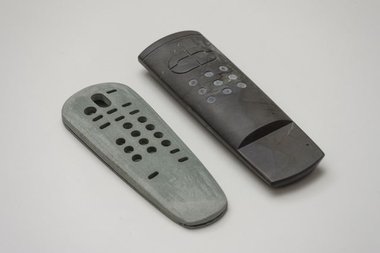
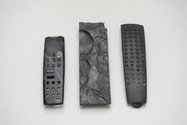
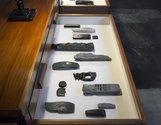

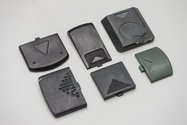
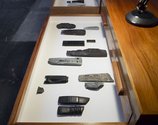
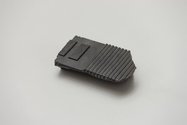
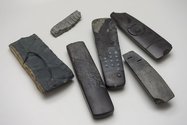

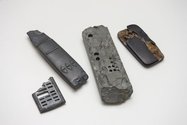
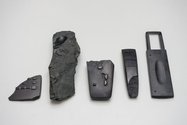
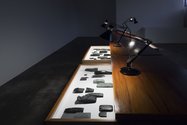
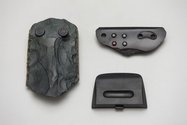
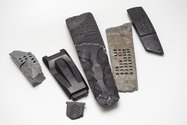
 Advertising in this column
Advertising in this column Two Rooms presents a program of residencies and projects
Two Rooms presents a program of residencies and projects


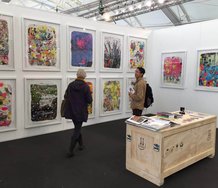
This Discussion has 0 comments.
Comment
Participate
Register to Participate.
Sign in
Sign in to an existing account.